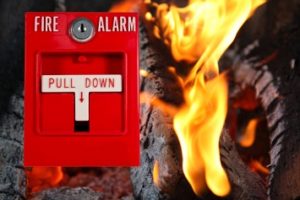A Billings, Montana, general contractor and a Rock Springs, Wyoming, subcontractor face $249,516 in penalties for exposing workers to numerous safety hazards, causing an employee to suffer severe burns.
Here’s What Happened
An employee suffered third-degree burns when compressed oxygen inside an underground duct caused a fire. The subcontractor was cited for failing to provide mechanical ventilation or an underground air monitoring system, and failing to report the hospitalization of the burned employee in a timely manner. The subcontractor faces penalties of $189,762.
The Occupational Safety and Health Administration (OSHA) also cited the general contractor for not ensuring that safety precautions were taken at the worksite. The general contractor faces penalties totaling $59,754.
Is There a Fire Waiting to Happen at Your Facility?
In order to prevent a fire at your facility, you must be aware of the fire hazards. Common causes of fires in the workplace include:
- Electrical hazards, including:
- Defective wiring (e.g., worn extension cords, exposed wiring, and broken power tools or equipment)
- Overloaded circuits or outlets
- Electric motors and machines clogged by dust or grease
- Flammable liquids (e.g., solvents, paint and paint thinners, gasoline)
- Compressed gases
- Hot work (e.g., welding and cutting operations)
- Smoking
- Housekeeping practices (e.g., dust, lint, sawdust, scraps, trash, combustible waste)
- Space heaters
- Arson
Tips for Preventing Fires
The best way to deal with a fire is to prevent it. Train your workers in these commonsense practices to reduce the likelihood of a fire in your workplace:
- Keep work areas free of dust and lint; put waste in proper containers.
- Keep combustible materials (e.g., paper) away from heat and machines.
- Follow label and safety data sheet (SDS) handling and storage precautions for flammable liquids.
- Clean up spills and leaks immediately.
- Use nonflammable substitutes whenever possible for cleaning and other tasks.
- Use approved, airtight metal containers for flammable liquids. Keep containers closed when not in use.
- Ground flammable liquid containers during transfers.
- Use flammable liquids only in well-ventilated areas, away from heat sources.
- Treat empty, used flammable liquid containers as you would full ones, unless purged.
- Remove saturated clothing immediately.
- Keep oxygen cylinders from contact with anything combustible.
- Replace electrical cords and wires that are frayed or that have worn insulation.
- Don’t overload circuits, motors, fuses, or outlets.
- Make sure you have good ground connections.
- Don’t let heating equipment or machinery run overnight if unattended.
- Keep machines and motors clear of dust and grease. Keep bearings lubricated.
- Smoke only where permitted.
- Use space heaters only in well-ventilated areas where they can’t fall over.
- Perform welding and cutting in protected areas.
- Use chemical label and SDS information to keep incompatible substances away from each other.
Arson
All your workers should be aware of the possibilities of arson in your workplace. Although arson may be directed at buildings or goods rather than people, it can still cause the deaths of workers or firefighters. The prime targets for set fires are shipping docks, outside areas where pallets or piles of cardboard are stored, or warehouses with costly goods.
Train your workers to report anything that looks suspicious. They should watch out for questionable actions, both by people they know and work with and also by outsiders or employees they don’t know.
Have a policy in place that workers will not be penalized for reporting unusual actions or incidents.

